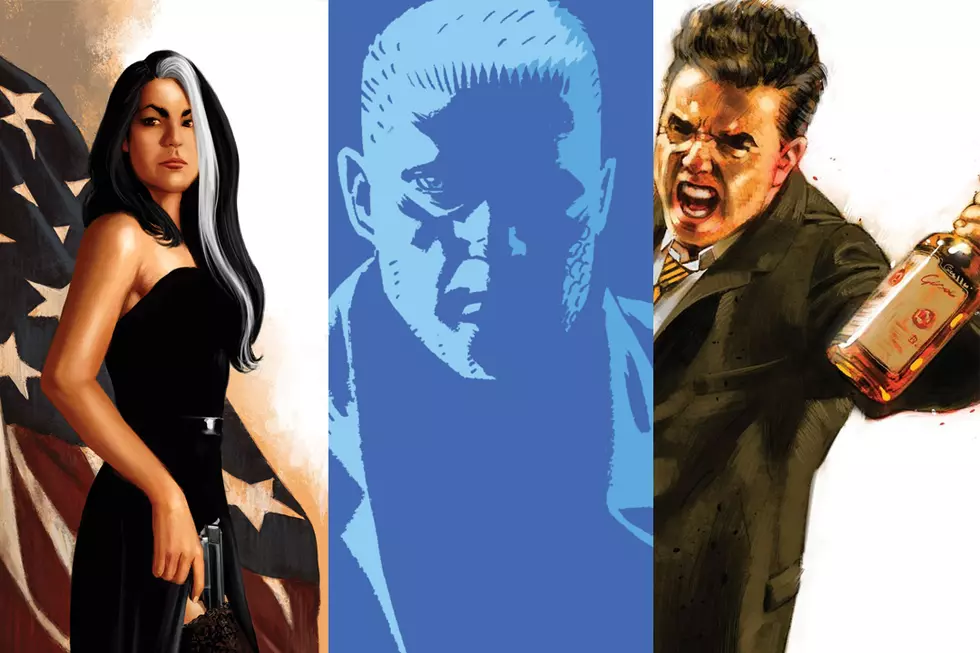![Ed Brubaker & Sean Phillips Play With Familiar Tropes in ‘Fatale’ [Interview]](http://townsquare.media/site/622/files/2012/05/seanphillips-fatale-top.png?w=980&q=75)
Ed Brubaker & Sean Phillips Play With Familiar Tropes in ‘Fatale’ [Interview]

The authors of Criminal, Sleeper and Incognito, Sean Phillips and Ed Brubaker have crafted yet another must-read series in Fatale, published by Image Comics. It's a bestseller, sure, but more than that, it's a really good comic. Brubaker and Phillips are examining the idea of the femme fatale by making her the focal point of the series, instead of just a looming threat, and throwing in a heaping helping of horror just to keep things fresh. If you aren't reading this series, you're missing out on the latest from one of the best writer/artist teams in comics.
After the jump, we've got an interview with Ed Brubaker and plenty of beautiful Sean Phillips art, with magnificent colors by Dave Stewart, for you to enjoy.Before we get into it, if you aren't familiar with the work of Phillips & Brubaker, you should definitely get familiar. I wrote a pretty comprehensive look at their work together earlier this year, complete with links so that you can go buy their books, and reviewed Fatale #1. Suffice it to say, the duo's work is broadly characterized by their considerable combined talents for sexy, noir-influenced imagery, non-traditional antiheroes and tightly woven, thematically complex plots that wind their readers tight enough to snap (in the best possible way). My favorite is Criminal: Last of the Innocent, but they're all well worth your time.
In Fatale, Brubaker and Phillips tell the story of Josephine, a classic femme fatale, as she navigates the twisting roads of male affection and demonic intrusions into real life. Through a combination of flashbacks and scenes set in the modern day, we see Jo's history unfold as lives collapse around her.

ComicsAlliance: Fatale is intended to revisit the idea of a femme fatale while simultaneously telling a pulpy noir tale. What led you to tackle both subjects at once, rather than making either subject the focus of a book of its own?
Ed Brubaker: I've been getting more interested in storytelling that has layers, I think. Two or three or more plotlines that weave around each other. And it seemed like a bigger challenge, to try to do three noir tales that are wound around a horror story examination of the idea of the femme fatale archetype. If you don't challenge yourself in your writing, you don't keep getting better. And I always want to try to push myself into doing things differently than I have before. I don't always succeed, of course, but trying to tell a bigger more sprawling story seemed like it would at least be a more interesting challenge, even if I failed.
Also, I think part of exploring the femme fatale idea necessitates bringing in other kinds of noir and pulp ideas. That's the territory you generally find the femme fatale in, so that's the way to get to her.

CA: The first arc of Fatale takes place in the '50s, which fits with the pulp and noir stylings of the story. The second arc of Fatale, which begins in June, takes place partly in the '70s. This may seem basic, but why the '70s? What does that time period have to offer to this specific story, whether historically or thematically?
EB: It's not just the '70s, it's Hollywood in the '70s. Which was a very specific time and place. Post-free love, post-Manson family. Part of Fatale is a horror story, and LA has some great f***ed up horror stuff and weird cult history from that time period. So I have a lot to draw on to make a fictional piece. And its interesting for the kind of Hollywood decadence of that era, too.
CA: Together, you and Sean Phillips have worked in several different genres. By my reckoning, you've done crime, espionage, superheroes, pulp, and horror. You've even dabbled in classic Americana in Criminal: The Last of the Innocent and newspaper adventure strips thanks to the Frank Kafka, P.I. comic-within-a-comic from Criminal: Lawless. Do you have a genre that you'd love to cover just for kicks, like war or comedy?
EB: I'd love to do a post-apocalyptic story, or a sci-fi, or a western. I've got ideas for all that stuff if we get time for it. But I'm not sure if Sean will ever want to draw horses that much. Flying cars at least have no wheels.
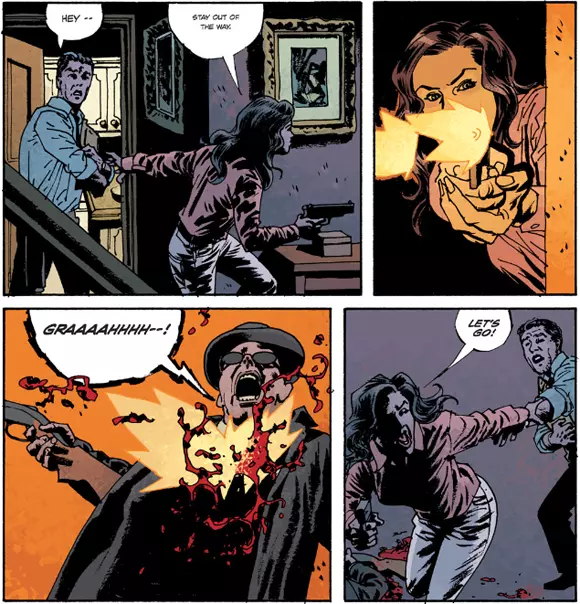
CA: You've done over 1,500 pages with Sean Phillips at this point. How has your collaborative process changed over the past years? Do you two sit down and hash out story beats together, or do you work relatively alone on each of your responsibilities?
EB: We pretty much work the same way we always have. I think I run the next idea by Sean to make sure he wants to draw it, and then I just write the scripts, and send them to him to draw. I generally write the script in a few chunks, and send them to Sean in five to eight-page sections, and he draws. He never wants me to tell him what's coming next. And writing for Sean is the best because we've been working together so long, I don't have to over-describe things. I just tell him the barest bones of what he needs to know to make the scenes work. Then he sends me the inked and lettered pages as he does them. Occasionally there'll be some typo or a balloon I don't like, so I'll change it and have him reletter that one, but it's a fairly streamlined operation after 12 years.
I'm always late and Sean is always early, is the other constant thing.
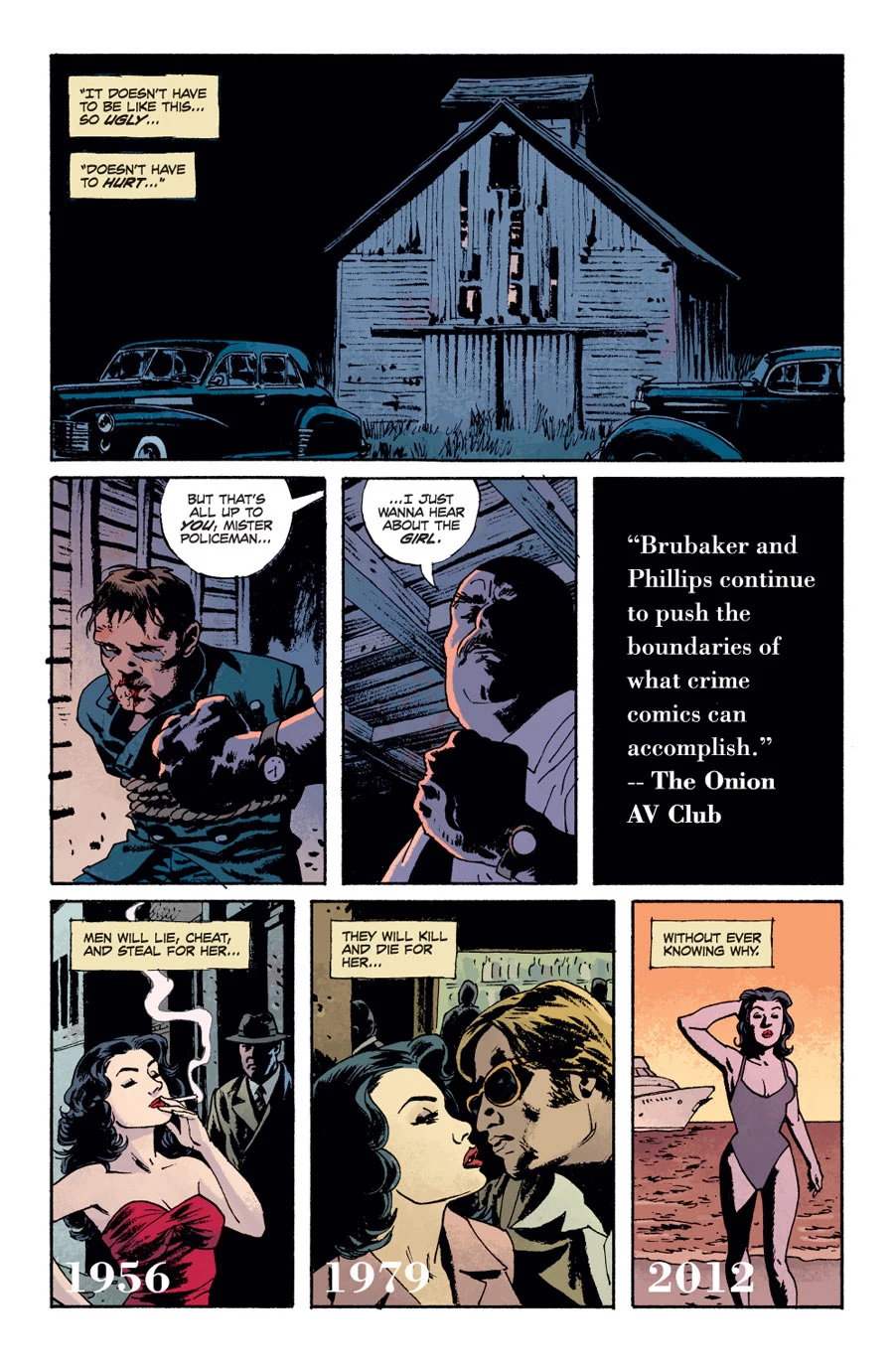
CA: Whose idea were the "trailers" (see above) for Last of the Innocent and Fatale? They're remarkably effective. Are they composed purely excerpts from normal issues arranged in the style of a movie trailer, or do you have to create these out of whole cloth?
EB: We've been doing those since we launched Criminal, back in 2006, actually. The first one was five pages, then we did another one for Incognito, that was more a teaser than a trailer, just two pages. I had the idea because I think the way most new series are announced and previewed doesn't really get retailers or readers that excited about them. The first four or five pages of a first issue aren't enough, generally, to grab someone, or give them enough of an idea of what the book is going to feel like. So I decided to write a sort of movie trailer in comics form, instead.
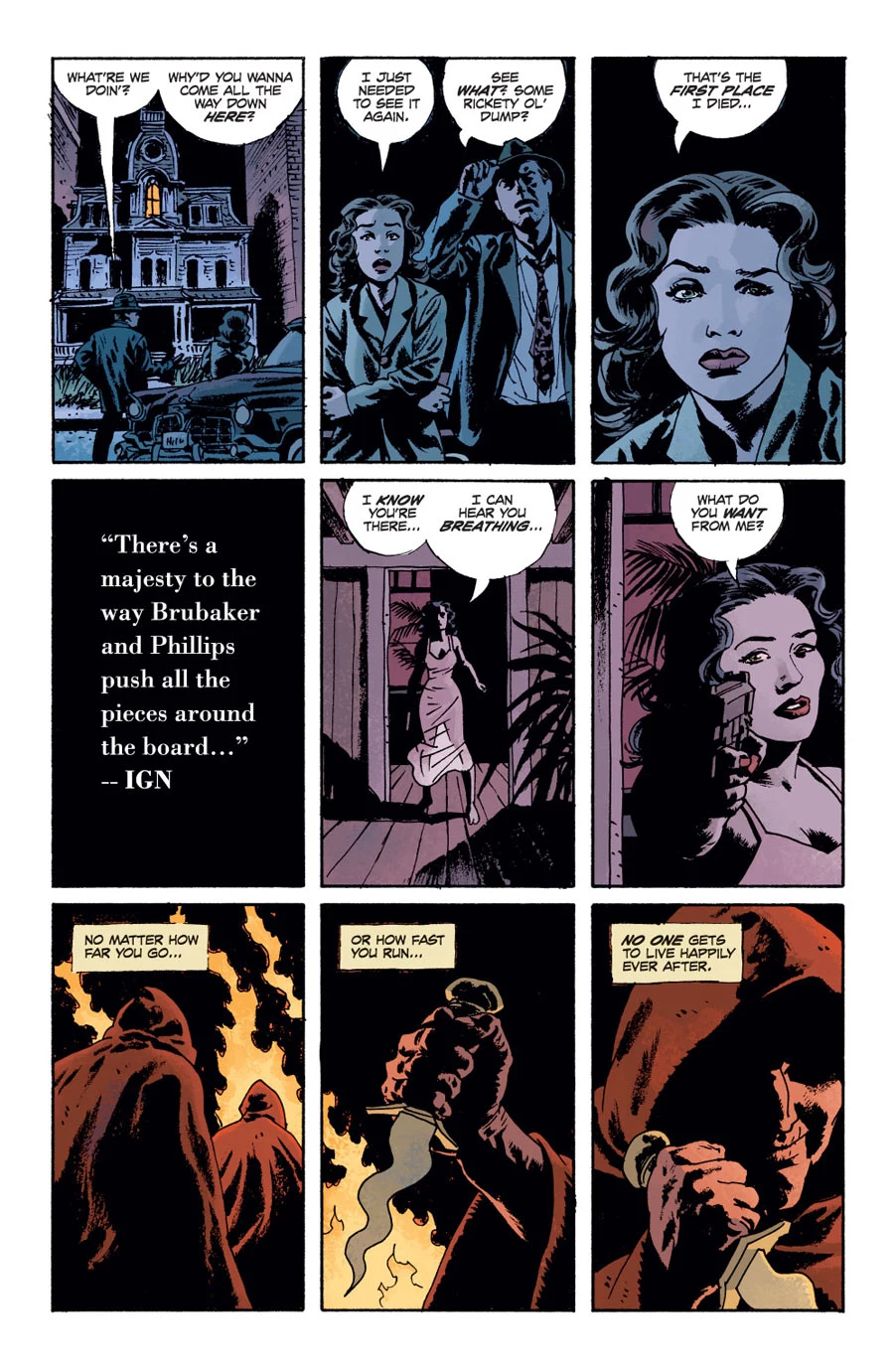
EB: Each time, those [trailers] have been done before we start work on the actual story, but generally I know what the story will be, so I try to find moments we may be able to reuse. The most important part to me, though, is that they get across a feeling and mood and tease out what the book will feel like. They're ads more than previews. They're not easy to write, though, because it's like editing a trailer for a movie that hasn't been written or filmed yet.

CA: I remember that when Fatale was first announced, it was listed as being 12 issues long. Since then, you've said that the series is going to run 15 issues. Why the expansion?
EB: Just a simple case of not having enough pages for the amount of story we were telling. I realized partway through issue #2 that I needed more space for the first arc. I'm starting to think I need even more for the second arc, now that I'm into it, too. Part of me sort of wants to turn Fatale into a longer story, even, because there's so much to delve into, and so many directions to go in. But I'm trying to stick to my three story arcs plan. But I had an idea for a single issue story for it, and I regretted that I didn't have the format for the series to just do that. Structure can sometimes hold you back, too, but I'm a slave to structure. I'll find a way to experiment within the issues, anyway.

CA: Do you have any favorite easter eggs or references that you've snuck into your work? I loved figuring out that Britt Black in Last of the Innocent was Brittanica Black, a grown-up analog of boy detective Encyclopedia Brown.
EB: I've been putting in a lot more things like that the past few years, I think since we started doing Incognito. The second Incognito book is filled with them, and there's even a meta-reference in the dialog in a place, that's a reference no one has ever gotten. The bad guy is having a sort of Alan Moore or Grant Morrison revelation, realizing the readers are watching him. And in the first Incognito, the main character has [American Splendor writer] Harvey Pekar's [day] job [as a file clerk], and lives in the same building as Maggie from Love and Rockets, if anyone's paying attention. That was my meta-joke. Where do you hide someone from mainstream comics (like a supervillain)? You put them in alternative comix.
Also in the second Incognito story, one of the Beagle Boys is a bouncer outside the supervillain bar.
But yeah, having grown up analogs of Richie Rich and Encyclopedia Brown walk past each other in Criminal, that was a fun moment.
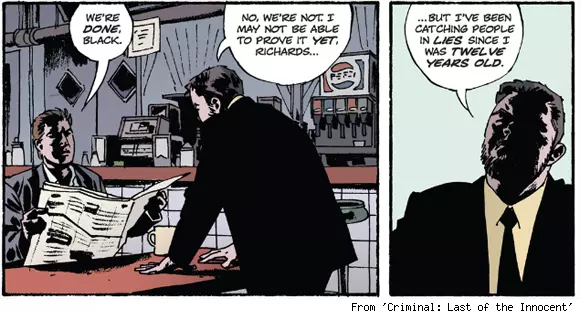
CA: You guys are one of the most visible regular creative teams in comics. What's your favorite aspect of working with each other?
EB: So many things. Sean is one of my best friends, and the artist I most trust with the most personal work that I write. I know that he's never going to let me down and he's always on time, and ready to produce more pages, which as you work in this field as long as I have, you learn is a rare thing -- great artist who can produce as many pages a year as Sean does. At this point, I think of us as a team, and just am always trying to figure out what we'll do next. I'm thankful as hell to have that, and thankful as hell that our books are finally selling well enough that I don't worry it'll go away.

CA: You seem extremely simpatico on the page. Do you have similar interests in pop culture in general?
EB: I don't think we do, too much. We may like some of the same old bands from the 80s, but Sean, strangely, isn't really a crime noir buff, he just likes to draw that stuff.
Fatale #1-5 are currently available at finer comics shops or online at ComiXology. Look for the collection of those issues, Fatale: Death Chases Me, to arrive in June, alongside issue #6 and the beginning of a new arc. Fatale is some of the best work from two of the best people working in comics right now. Give it a try. Collections of Sleeper, Incognito and Criminal are also available in bookstores, comic shops and digitally.




More From ComicsAlliance





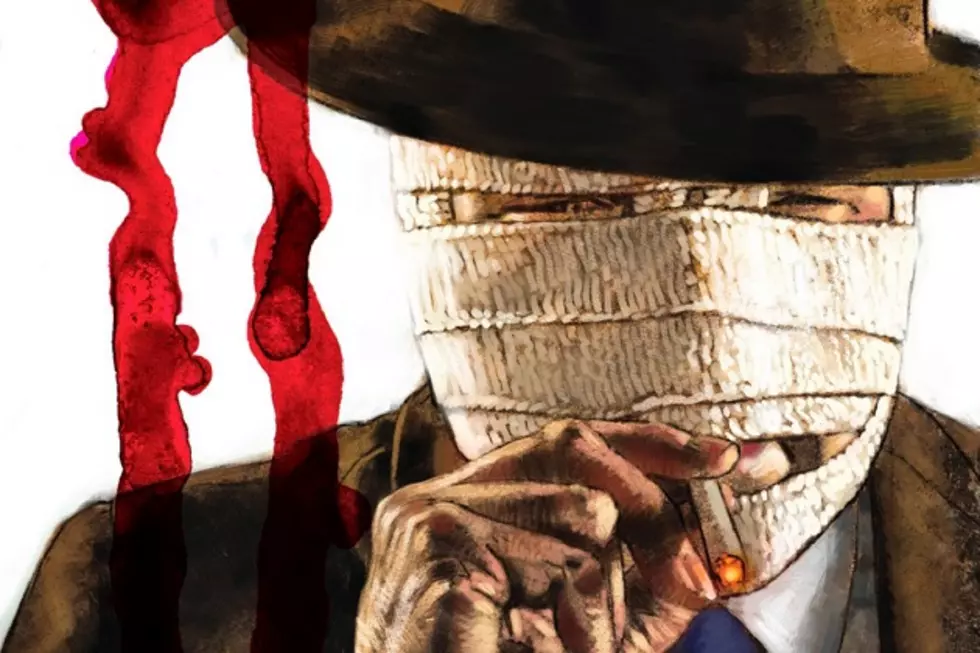
![Brilliant Art, Tremendous Stories and Daring Creators: The 2016 Eisner Award Winners [SDCC 2016]](http://townsquare.media/site/622/files/2016/07/eisner2016.jpg?w=980&q=75)

